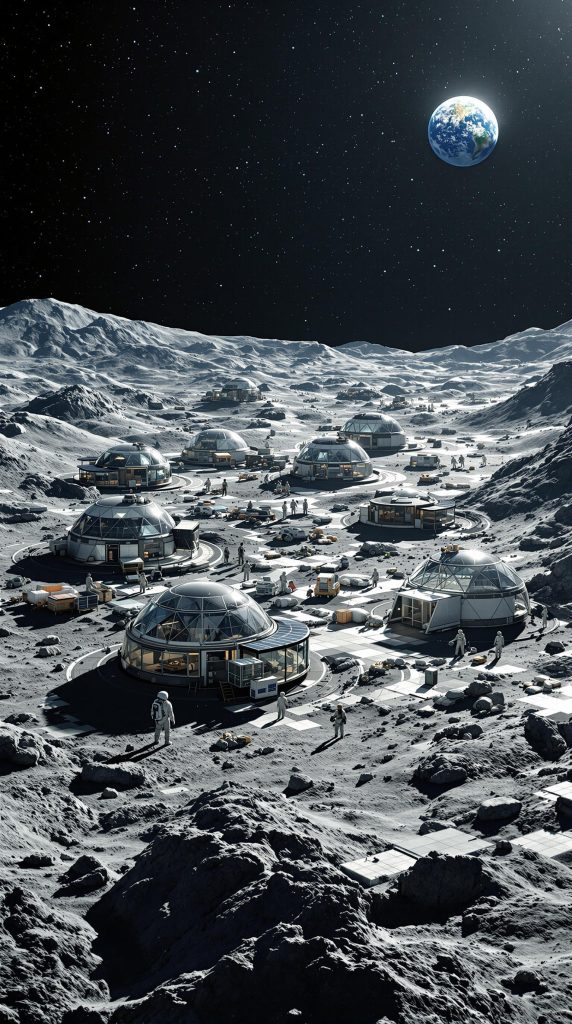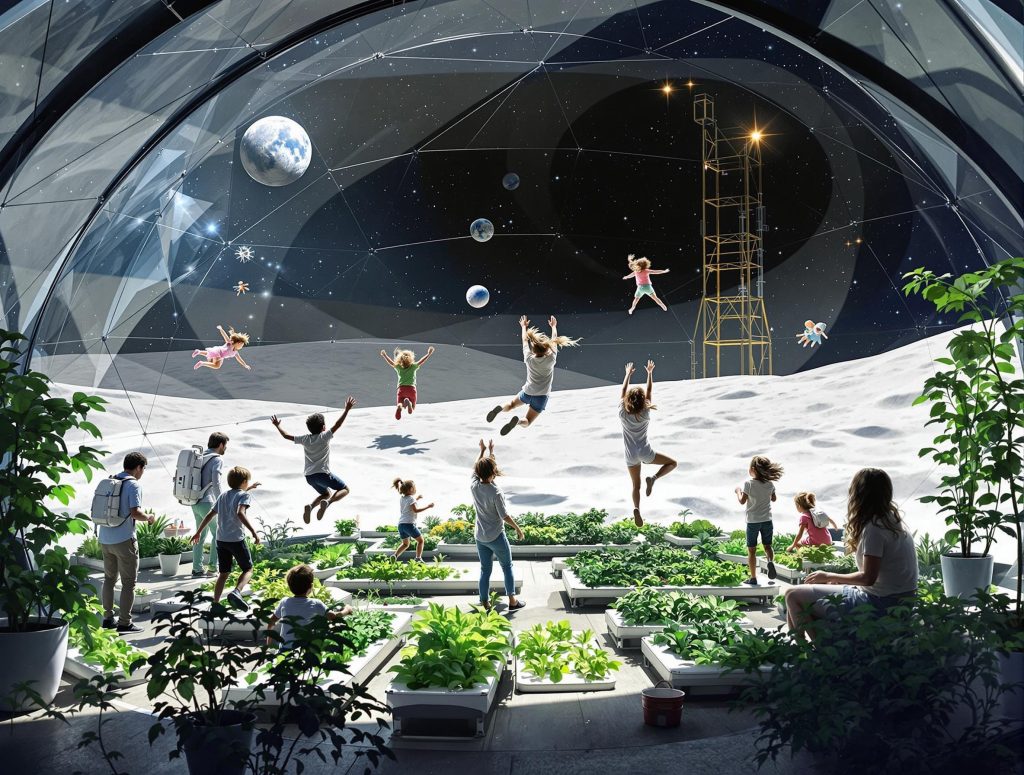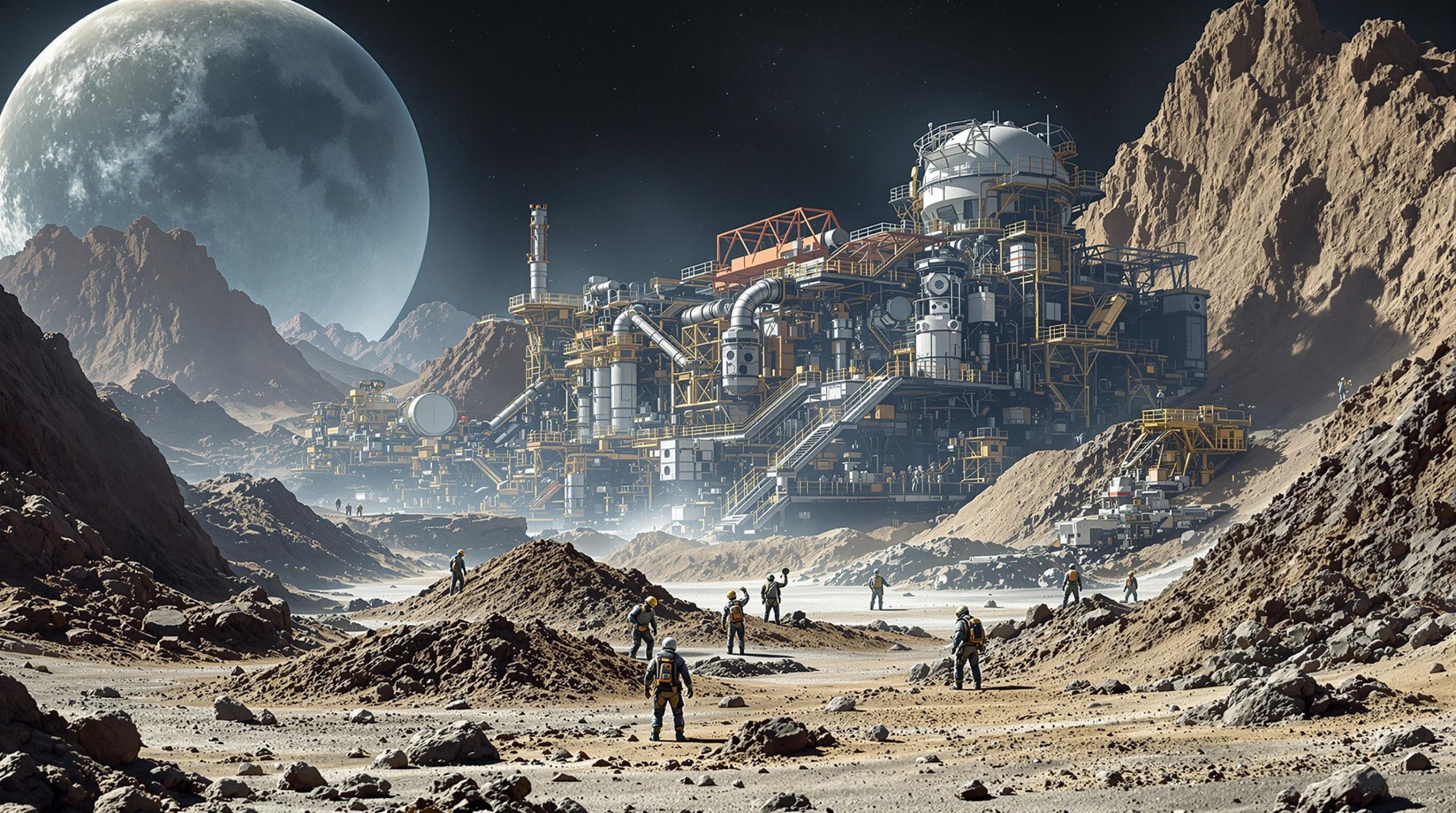How to Living on the Moon ? The Moon, Earth’s only natural satellite, has fascinated humanity for millennia. With renewed interest in lunar exploration, spurred by programs like NASA’s Artemis and China’s Chang’e missions, the concept of living on the Moon is closer to reality than ever. However, establishing a sustainable human presence on the Moon is far from simple. This article explores the myriad challenges of living on the Moon, from harsh environmental conditions to the logistical hurdles of maintaining life in an alien world. Stay with Spaceyv
Why Live on the Moon?
Before diving into the challenges, it’s worth understanding why humanity is so keen on the idea of lunar habitation:
- Scientific Exploration: The Moon offers a unique platform to study the origins of the Earth-Moon system, planetary geology, and even the broader solar system.
- Resource Utilization: Lunar resources, like water ice at the poles, could support long-term human missions and even fuel spacecraft for deeper space exploration.
- Stepping Stone to Mars: The Moon serves as a testbed for technologies and strategies needed for Mars colonization.
- Economic Opportunities: Mining lunar resources and developing space tourism could unlock new industries.
Despite these compelling reasons, the Moon presents formidable challenges.

1. The Harsh Lunar Environment
Extreme Temperatures
The Moon experiences temperature swings that are far beyond anything on Earth. Daytime temperatures can soar to 127°C (260°F), while nighttime temperatures plummet to -173°C (-280°F). These extremes pose significant challenges for human survival and the functionality of equipment.
Lack of Atmosphere
The Moon lacks a substantial atmosphere, which leads to several problems:
- No Protection from Solar Radiation: Without an atmosphere, the Moon is bombarded by harmful solar and cosmic radiation, increasing the risk of cancer and other health issues.
- No Air for Breathing: Unlike Earth, the Moon offers no oxygen for respiration, requiring habitats to maintain a controlled breathable environment.
Micrometeoroids
Without atmospheric protection, the Moon is constantly exposed to micrometeoroids—tiny, high-speed particles capable of damaging habitats, equipment, and even astronauts.
2. Limited Resources on Living on the Moon
Water Scarcity
While water ice has been discovered in permanently shadowed craters at the lunar poles, extracting and processing it is technologically challenging. Access to water is essential for drinking, growing food, and generating oxygen and hydrogen (for air and fuel).
Food Production
The Moon’s barren surface and lack of soil make traditional agriculture impossible. Innovative solutions, such as hydroponics and vertical farming, would be required but add complexity to lunar habitation.
Energy Supply
Energy is vital for life support systems, communication, and scientific experiments. Solar power is a potential solution, but the two-week-long lunar night complicates continuous energy generation.
3. Health Risks for Astronauts
Exposure to Radiation
Radiation exposure on the Moon is up to 200 times higher than on Earth, primarily due to the lack of a magnetic field and atmosphere. Prolonged exposure can damage DNA and increase the risk of cancer, necessitating the use of heavily shielded habitats or underground living spaces.
Effects of Low Gravity
The Moon’s gravity is only 1/6th of Earth’s. While this might seem fun, it poses long-term health risks:
- Muscle Atrophy: Reduced gravitational force leads to muscle loss and weakness over time.
- Bone Density Loss: Similar to astronauts on the International Space Station (ISS), lunar inhabitants would experience significant bone density reduction.
- Fluid Redistribution: Low gravity causes bodily fluids to move upward, leading to pressure on the eyes and potential vision problems.

Lunar Dust (Regolith)
Lunar regolith is a pervasive, fine, and sharp dust that clings to surfaces due to electrostatic charge. It poses several challenges:
- Health Hazards: Inhalation can cause respiratory issues and lung damage.
- Equipment Damage: Its abrasive nature can wear down machinery and spacesuits.
4. Building Sustainable Habitats
Shielding from the Environment
Lunar habitats must provide protection against radiation, temperature extremes, and micrometeoroids. Proposed solutions include:
- Regolith Shielding: Covering habitats with lunar soil for insulation and radiation protection.
- Underground Bases: Building habitats within lava tubes or craters for natural shielding.
Life Support Systems
Creating closed-loop life support systems capable of recycling air, water, and waste is essential for long-term survival. This involves significant technological advancements and rigorous testing.
You can Also read More : How Do Rockets Work? A complete guide on 2025
5. Logistical and Operational Challenges
Cost of Transportation
Transporting materials and equipment to the Moon is incredibly expensive. The cost per kilogram of payload is currently estimated at tens of thousands of dollars, limiting the feasibility of large-scale operations.
Communication Delays
Although the Moon is relatively close to Earth (about 1.3 light seconds away), communication still faces slight delays. This complicates real-time decision-making and remote operation of equipment.
Maintenance and Repairs
Lunar habitats and equipment must be designed for minimal maintenance, as repair missions would be infrequent and costly.
Psychological Challenges
Living on the Moon means enduring isolation, confinement, and separation from Earth. Astronauts would face psychological stress similar to that experienced on the ISS, compounded by the alien and barren environment.
6. Political and Legal Considerations
Ownership and Governance
The Moon is governed by the Outer Space Treaty of 1967, which prohibits national sovereignty and militarization. However, the treaty does not fully address commercial exploitation or resource sharing, leading to potential conflicts.
International Collaboration
Establishing a lunar base requires global cooperation. Managing competing interests while ensuring equitable resource use will be a significant challenge.
Overcoming the Challenges
Despite these difficulties, progress is being made to address the challenges of living on the Moon. Key strategies include:
- Technological Innovation: Advancements in radiation shielding, sustainable energy, and life support systems are paving the way for lunar habitation.
- International Partnerships: Collaborative efforts, like NASA’s Artemis Accords, promote peaceful and cooperative exploration.
- Robotic Assistance: Robots and autonomous systems can perform dangerous or repetitive tasks, reducing risks to humans.
Conclusion
Living on the Moon is an extraordinary challenge that requires overcoming environmental, logistical, and political hurdles. However, the rewards—scientific discovery, technological innovation, and the potential to become an interplanetary species—make the effort worthwhile. As we stand on the brink of a new era in space exploration, humanity’s dream of living on the Moon is not just science fiction but an attainable reality. The road ahead is difficult, but with determination and collaboration, it is a journey we are ready to embark on.
NASA – Artemis Program
URL: https://www.nasa.gov/specials/artemis
Description: NASA’s official page on the Artemis program provides detailed information on the challenges and plans for returning humans to the Moon and establishing a sustainable presence.
European Space Agency (ESA) – Moon Exploration
URL: https://www.esa.int/Science_Exploration/Human_and_Robotic_Exploration/Moon
Description: ESA’s dedicated section on Moon exploration highlights international efforts, challenges, and the future of lunar habitation.



